Blog Post
The day the Canadians freed the Dutch
By Jonathon Van Maren
Just around the corner from the copy shop in Wageningen where I was printing my notes for a pro-life presentation last month, I spotted a plaque on the side of a red brick hotel with white and yellow striped awnings crouching over the windows. It was here at Hotel de Wereld on May 5 and 6 of 1945, as it turned out, that General Johannes Blaskowitz surrendered the 25th German Army to the Canadian general Charles Foulkes, with Prince Bernhard in attendance. Although Blaskowitz agreed to the terms of surrender proposed by Foulkes on May 5, nobody could find a typewriter in the entire town of Wageningen, and as a result the generals had to return the following day to type out and sign the surrender documents.
In the Netherlands, the formal end of the Second World War is celebrated with Liberation Day on May 5, which was recently proclaimed Dutch Heritage Day in Canada. The bond between Canada and the Netherlands was forged by the blood of the Canadian soldiers who fought and died to free the Dutch, and on Liberation Day the young men who sleep beneath the rows of crosses are solemnly remembered. Years ago when I was touring the Netherlands with a choir group, the elderly woman giving us a tour of Doorwerth Castle near Arnhem asked us to sing the Canadian anthem for her. As we did, her face lit up and tears began streaming down her face. The last time she had heard that anthem sung, it turned out, the Canadian soldiers had been liberating her village from the Germans.
Remembered, too, are those who died in the Nazi bombing of Rotterdam (which both of my grandmothers witnessed), the murdered resistance workers and reprisal killings, and those who starved to death during the Hunger Winter. Walking with some friends through the dunes pocked with the bunkers and other remains of the Atlantic Wall in Hoek van Holland recently, our host pointed out a white mansion as we exited a small forest. For years, he said, it was almost impossible to find a buyer for that house, because it was used by the Nazis—and many say that they horrifically tortured members of the Dutch Resistance there, tying them to chairs and kicking them down the stairs. In Canada, the War is confined to cenotaphs, museums, and the occasional monument. Here, history sleeps lightly.
I called my grandmother to ask what she remembered of Liberation Day in Nieuw-Beijerland, the little Dutch village where she grew up. She was eight years old, and she vividly recalled their neighbor knocking on their window. The family was shocked, she said, because it was after the German-enforced curfew, and nobody was allowed outside. Then, they heard the news: “We’re free! We’re free!” First, she remembered, the whole family got down on their knees to thank God for the long-awaited liberation. Then, her mother went upstairs to search for the orange banners and Dutch flag she had hidden there to hang out the windows. Everybody poured out onto the streets, laughing and singing and crying and saying, over and over with disbelief: We’re free! We’re free!
That Sunday, there was a special thanksgiving service at church. She also remembered the mayor, who had been forced into hiding and replaced by a Nazi collaborator, returning to the village, and the moment he stepped out of the carriage. More celebration ensued. The two young men who her father, a baker, had hidden from the Germans to prevent them from being deported as forced labor, went into the fish business and often returned to give the family free fish in gratitude for what they had done. Eventually, my grandmother recalled, the two “onderduikers” moved to Australia.
Sadly, there was also one tragic postscript. A few kilometres away from the village, a couple who had been heavily involved in the resistance hung a Dutch flag from the window of their windmill upon hearing of the liberation. A retreating German soldier shot at the flag–and killed the woman. They had survived the entire war despite the dangerous work they did, hiding fugitives from the occupying Germans. She was not the only Netherlander murdered by the wave of Germans flowing back toward their battered homeland. In the moment of celebration, the Nazis struck a final, vindictive blow. “We were already free,” my grandmother said sadly. “We were already free, and still she was killed.”
On Liberation Day, we remember the unsung and fallen heroes like the Dutch woman struck down in the very moment of longed-for victory. We remember the Canadian soldiers who fought and died to make that Liberation Day possible. And we thank God that thus far, these things live on in the memories of our grandparents, and not the lives of our children.



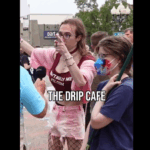
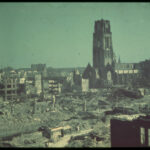
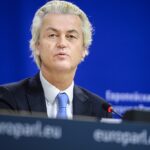
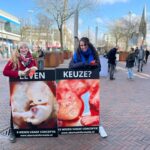
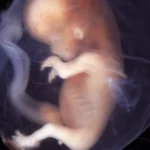
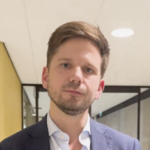
I am so glad to have read this story. My daughter and her husband back-packed around Europe about 18 yrs ago, and had Canadian flags on those backpacks. They were hugged, and thanked and blessed and thrilled to meet with some of those who had been liberated by Canadian troops.
They were and are very proud to be Canadians. May we hold our flag high and serve our country well, in whatever way that is.
Laura Matsuda
My father’s unit was the first unit into Rotterdam ( Fox Troop) and he was OOD when the ceasefire came down from HQ.
Very inpressive!!
the picture shows American soldiers, Canadians wore British style uniforms and helmets
My wife’s great uncle was part of the Canadian army that liberated Holland. The only thing I remember him saying about the war was how much he hated the Germans. The reason was as the people were running out to great the Canadians the Germans would shoot them in the back.
My mother went through the war in Holland as a teenager. It scarred her for life.
Is she still living?
A friend of mine pointed out that this picture is not of Canadian soldiers as the helmets are wrong. Can you confirm whether this is accurate and whether those are American soldiers rather than Canadian? That kind of oversight creates all kinds of potential confusion on the accuracy of historical information.
It is a great picture it just doesn’t represent the article properly.
It’s from a historical site on Liberation Day in the Netherlands. It wasn’t exclusively Canadian soldiers who liberated Holland, and on second look those do appear to be American helmets, so your friend could be right, yes.
First Canadian Army had under its command, in addition to its Canadian divisions and independent brigades, Polish Army, British Army, US Army, and Free French, Belgian and Dutch smaller units at various points during the Northwest European campaign.
In addition, along with First Canadian Army, 21st Army Group included Second British and Ninth US armies. The latter were more in Belgium, but also eastern parts of the Netherlands before moving into Germany.
Sadly they are American soldiers in this picture. The US commanding officers strategically landed their American soldiers pretty much out of harms way further up the coast during the freedom mission. The Canadian boys were sent straight into fire and there were MANY Canadian casualties, but the gritty Canadians got the job done.
The photo is of American soldiers, not Canadians. Their helmets were different.
Great article though!
My grandfather was a sergeant with the Canadian Irish Regiment and was among those who liberated Holland. I have a 1945 coin from the Netherlands which he saved and turned into a medallion to wear. His greatest joy was travelling to Holland every spring for these memorial celebrations.
The people in Holland appreciated the Canadians for liberating them — still do — WWII
“You have to have been occupied to appreciate what freedom really means, and when you do, you never forget who gave it to you.” Appledorm (Appledorm, a municipality and city in the province of Gelderland, in the centre of the Netherlands.)
Good story but an incorrect image.
Those are clearly American soldiers
as those are not Canadian uniforms or helmets.
Ya, Like they didn’t trade gear on occasion, the helmet proves nothing, also soldiers that got separated from their unit often took up with another, people got left behind or separated during fast moving action and there are many documented accounts of soldiers being re-assigned by a superior officer and temporarily attached to another unit.
Mi father was also part of the liberation of Holland .He was in 4medium artillery regiment .He love the dutch people but never went back.
Thanks for sharing!
Greetings from the Netherlands. I didn’t know about the typewriter. Yes, we are fond of Canada, for many reasons, including our gratitude to all who helped to defeat Hitler. When listing the crimes of the Nazi occupation, you could also have mentioned the hundreds of thousands of Jews, Sinti, Roma, homosexuals and Communists deported and murdered.
My husband was with the Canadians when Holland was liberated in 1945 then he stayed till 1946. Later in the 1990s he received a medal from the Dutch for his part in the liberation.Very proud of his contribution.
Thank you for sharing!
Yes. . . I lived my rarly years under the Nazi jack boot. . .i remember liberation by the Canadians well. Have many photos .
Would you be willing to send an email with some of your memories to jonathon@thebridgehead.ca? I’d love to hear about them!